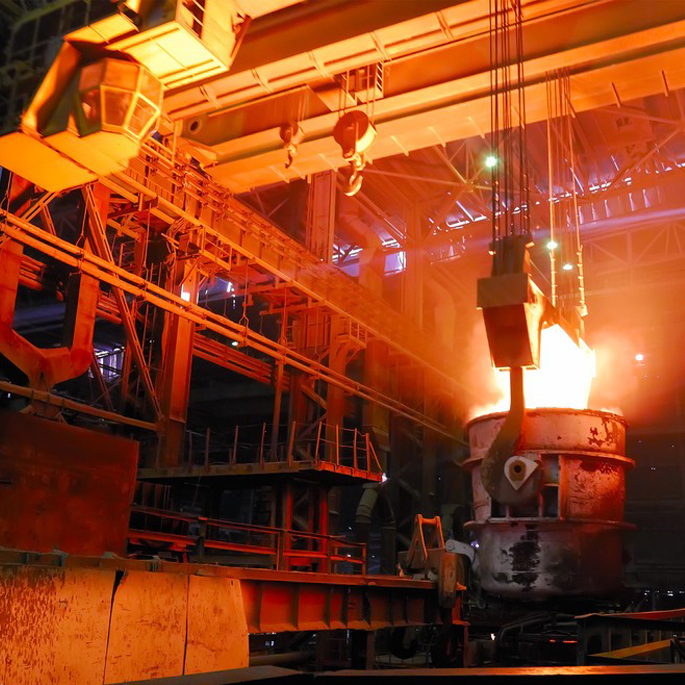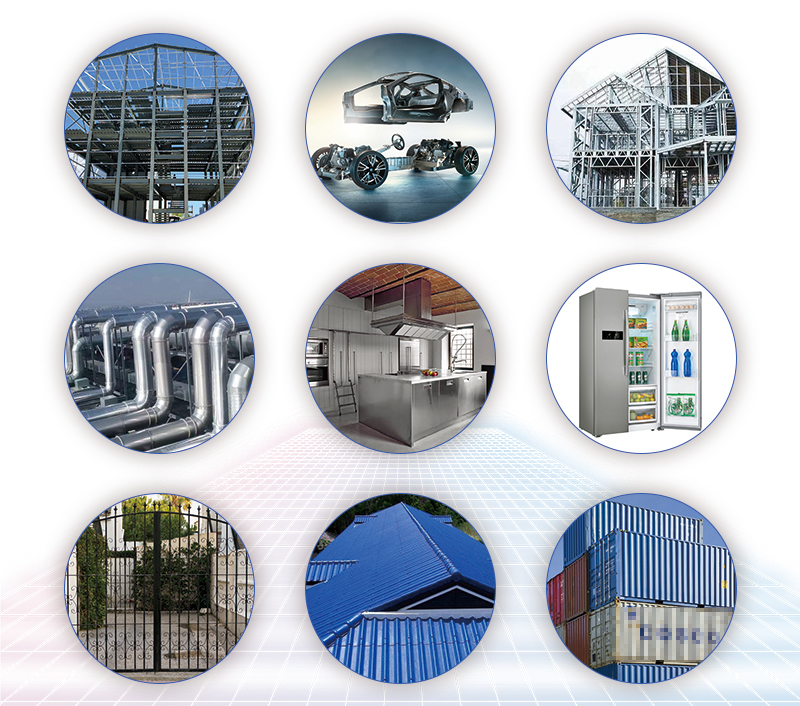What is galvanized steel coil?
After extraction of hot steel from blast furnaces in steel furnaces, the steel is cold-hardened and processed further to improve strength, quality and other surface and internal material properties.
After that, it is shaped or moulded into slabs, ingots, sheets, billets, etc., for further utilisation. This process is also known as the casting of steel.
Galvanized steel coils have different surface conditions due to different treatment methods in the coating process, such as ordinary zinc coils, fine zinc coils, flat zinc coils, zinc-free coils, and phosphating-treated surfaces. Galvanized steel coils should have a good appearance and must not have defects harmful to the use of the product, such as no plating, holes, cracks and scum, excessive plating thickness, scratches, chromic acid dirt, white rust, etc.
According to the production and processing methods, it can be divided into the following categories:
a) Hot-dip galvanized steel coil. The thin steel coil is dipped into the molten zinc bath to make the thin steel coil with a layer of zinc adhered to its surface. At present, the continuous galvanizing process is mainly used for production, that is, the coiled steel plates are continuously immersed in a galvanizing tank with molten zinc to make galvanized steel coils;
b) Alloyed galvanized steel coil. This kind of steel coil is also made by hot dip method, but it is heated to about 500℃ immediately after coming out of the tank, so that it can form an alloy film of zinc and iron. This galvanized coil has good paint adhesion and weldability;
c) Electrogalvanized steel coil. The galvanized steel coil manufactured by electroplating has good processability. But the coating is thinner, and its corrosion resistance is not as good as that of hot-dip galvanized coils;
d) Single-sided galvanized steel coils and double-sided differential galvanized steel coils. Single-sided galvanized steel coil, that is, a product that is galvanized on only one side. In welding, painting, anti-rust treatment, processing, etc., it has better adaptability than double-sided galvanized coils. In order to overcome the disadvantages of uncoated zinc on one side, there is another kind of galvanized coil coated with a thin layer of zinc on the other side, that is, double-sided differential galvanized coil;
e) Alloy and composite galvanized steel coils. It is a steel coil made of zinc and other metals such as lead and zinc alloy or even composite plated. This kind of steel coil not only has excellent antirust performance, but also has good coating performance.
In addition to the above five types, there are also colored galvanized steel coils, printed and painted galvanized steel coils, PVC laminated galvanized steel coils, etc. But the most commonly used one is still hot-dip galvanized coil.
According to the application, galvanized steel coils can be divided into general use, roofing, building outer panel, structure, tile ridge board, stretching and deep drawing galvanized steel coils.
The reason why the surface of the galvanized coil is coated with a layer of zinc on the surface of the steel is actually because the steel plate is easily oxidized by water and other oxides in the air, thereby being corroded. The coating with a layer of zinc is actually to better protect the steel. Galvanized coils have two major advantages, one is adhesion and the other is weldability. It is precisely because of these two advantages that it is widely used in construction, industry, automotive industry and commerce. Another important characteristic is corrosion resistance, which can produce good results for the manufacture of home appliance casings.
Characteristics of galvanized steel coil:
Corrosion resistance: The corrosion resistance of “55% aluminum-zinc coated steel coil” comes from the protective function of the barrier layer of aluminum and the sacrificial protective function of zinc.
While zinc acts as a sacrificial protection on cut edges, scratches and coating scratches, aluminum forms an insoluble oxide layer that acts as a protective barrier. The edge protection function is better than galvanized steel plate and 5% aluminum-zinc plated steel plate.
The aluminum-zinc-coated steel coil has been subjected to outdoor exposure tests for more than 20 years in various atmospheric environments, and the heat resistance of the 55% aluminum-zinc-coated steel sheet has been confirmed:
The heat resistance of 55% Al-Zn plated steel plate is better than that of galvanized steel plate, which is similar to the high temperature oxidation resistance of aluminum plated steel plate. The galvanized steel sheet can be used in a high temperature environment of 315oC.
Reflective:
The 55% Al-Zn plated steel is highly reflective, making it a barrier against heat.


